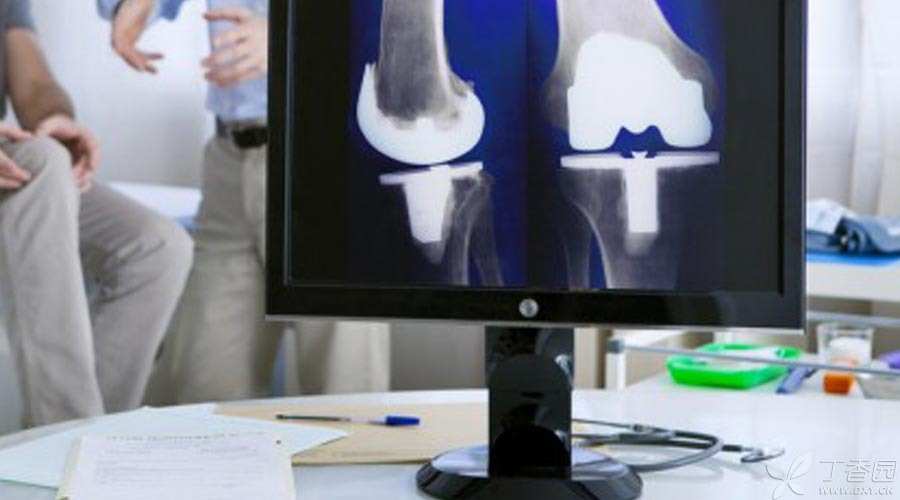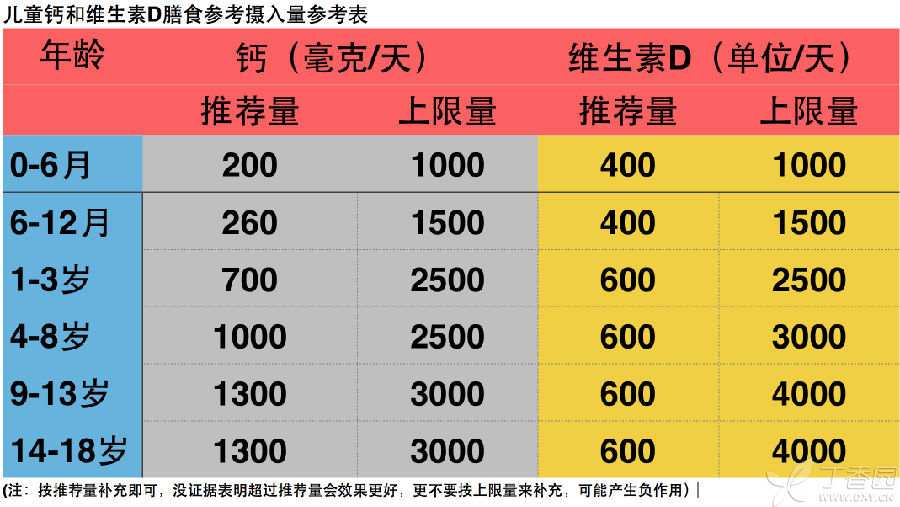
I. Recommended amounts of new calcium and vitamin D
According to the recommendation of the American Medical Research Institute in 2011, this guideline updated the recommended amount of calcium and vitamin D in children’s daily diet (see the figure below). It should be noted that we only need to supplement according to the recommended amount. There is no evidence that exceeding the recommended amount will be better, let alone according to the upper limit. Exceeding the upper limit may cause side effects.

Second, encourage calcium and vitamin D from diet
As can be seen from the above figure, the daily calcium requirement within one year old is less than 300 milligrams. The calcium content in breast milk can meet the needs of children and has better bioavailability. Therefore, breast-fed children do not need additional calcium supplement. The calcium content in formula milk is often higher than that in breast milk and does not need additional calcium supplement.
For children after one year old, the source of calcium mainly depends on milk and other dairy products. In the United States, milk accounts for 70-80% of the total intake of calcium. Green leafy vegetables are also an important source of calcium, but vegetables alone are difficult to meet the demand for calcium. In addition to milk, dairy products and vegetables, other sources of daily calcium supplement include beans, nuts, calcium fortified grains, etc.
By supplementing calcium in daily diet, not only the bioavailability of calcium is high, but also protein, phosphate, magnesium, cellulose, etc. can be supplemented at the same time, which is the best way to supplement calcium. We should encourage children to drink more milk and dairy products (the calcium content of 100 ml milk is about 100 mg), beans, vegetables and other foods with high calcium content, and check with the reference table to see if they have been supplemented.
Three, do not recommend the use of calcium supplements
For healthy children, Calcium supplements do not reduce the risk of fracture, The American Academy of Pediatrics does not recommend healthy children to use calcium supplements (calcium tablets and the like). Because this way of calcium supplement is not only low in bioavailability, Moreover, it is not conducive to the formation of good eating habits. Good eating habits can benefit children for life. We should try our best to cultivate children to establish healthy and balanced eating habits. We should take in the recommended amount of calcium in our diet. Only when children cannot get enough calcium from their diet can we consider additional calcium supplements.
Four, calcium supplement at the same time to supplement vitamin D
Vitamin D is very important for the absorption and utilization of calcium. Without vitamin D, only 10-15% of calcium in the diet can be absorbed. There are too many factors affecting sunshine. It is very unreliable to synthesize vitamin D by skin through sun exposure, and there are worries about skin cancer. Therefore, children should supplement vitamin D a few days after birth (see the previous figure for reference).
Five, encourage children to exercise more
“That force acting on the bone promote the construction of the bone, Weight-bearing exercise can promote the increase of bone minerals in children and adolescents. Different exercise styles will affect specific bones. For example, a 10-minute jump exercise three times a week can increase the bone density of the femoral neck, and the effect is most obvious in early puberty. For children and adolescents, walking, jogging, jumping and dancing are better than swimming and cycling.
Six, don’t drink carbonated drinks
Studies have shown that children who drink carbonated beverages will drink less milk. Replacing milk with carbonated beverages will affect the intake of calcium and vitamin D. Moreover, carbonated beverages have no health benefits for what and should not drink or drink as little as possible.
Seven, weight control
Bone mineral density is directly related to BMI index, and the risk of fracture in obese people will also increase. Obese children are also prone to vitamin D deficiency. Maintaining a healthy weight during childhood and adolescence is very important for bone health.
VIII. Effects of Hormones
Estrogen is very important to maintain bone mineral density in women, Estrogen deficiency will increase bone absorption and increase the risk of fracture. Testosterone and growth hormone will promote bone formation, while adrenocortical hormone will accelerate bone absorption and damage bone formation. However, reliable doctors will weigh risks and benefits before using hormones. If the disease needs to use them, they still need to use them.
IX. Lifestyle
Smoking, drinking and caffeine intake will affect adult bone health, and children and adolescents should also avoid it.
Childhood is an important stage of bone development and maturity. Ninety percent of human bone mass is acquired before the age of 18, Children’s bone condition will have a lifelong impact on health. There are many factors that affect bones, and many factors we cannot change, such as genes, gender, race, etc. Many parents blindly give their children calcium tablets, worried that their children will lose at the starting line and know scientific methods to improve their children’s bone health.
Author: Pei Honggang
The article was reprinted by Clove Garden authorized by the author.
